|
Figure 1
:
Regime shifts of pelagic fish, sardine and anchovy, in three of the four eastern boundary current systems and in the Japanese system.
|
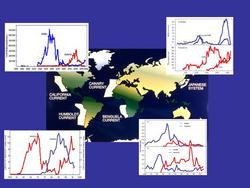
|
|
Figure 2
:
Data sources for the southern Benguela: sample collections used for the reconstruction of long-term zooplankton time-series in St Helena Bay, South Africa (only autumn collections considered; see Verheye et al. 1998).
|
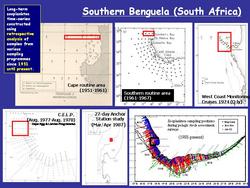
|
|
Figure 3
:
Long-term time-series of copepod abundance (log10 [No+1 m-2]) and biomass (log10[g dry mass+1 m-2]) in St Helena Bay, 1951-1999 (updated from Verheye et al. 1998 and Verheye and Richardson 1998).
|
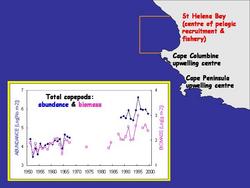
|
|
Figure 4
:
Map showing the extensive station grid of monthly sampling during the SWAPELS (South West Africa Pelagic Eggs and Larvae Surveys) programme off Namibia (previously SW Africa) during 1972-1989, from which selected samples are being analysed to reconstruct long-term zooplankton time-series in the northern Benguela.
|
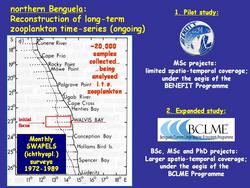
|
|
Figure 5
:
Data sources for the northern Benguela: sample collections used for the reconstruction of long-term zooplankton time-series off Walvis Bay, Namibia (all seasons considered).
|
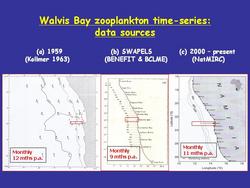
|
|
Figure 6
:
Long-term time-series of (a) coastal zooplankton biomass (log10 Settled Volume, in ml m-2) on SWAPELS Line 70 off Walvis Bay, northern Benguela (all stations within 30nmi from coast, all months, 1959-2004) and (b) total copepod abundance (log10 [No+1 m-2]) in St Helena Bay, southern Benguela (all stations within 1
|
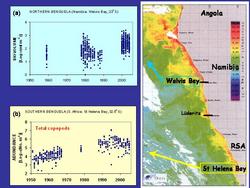
|